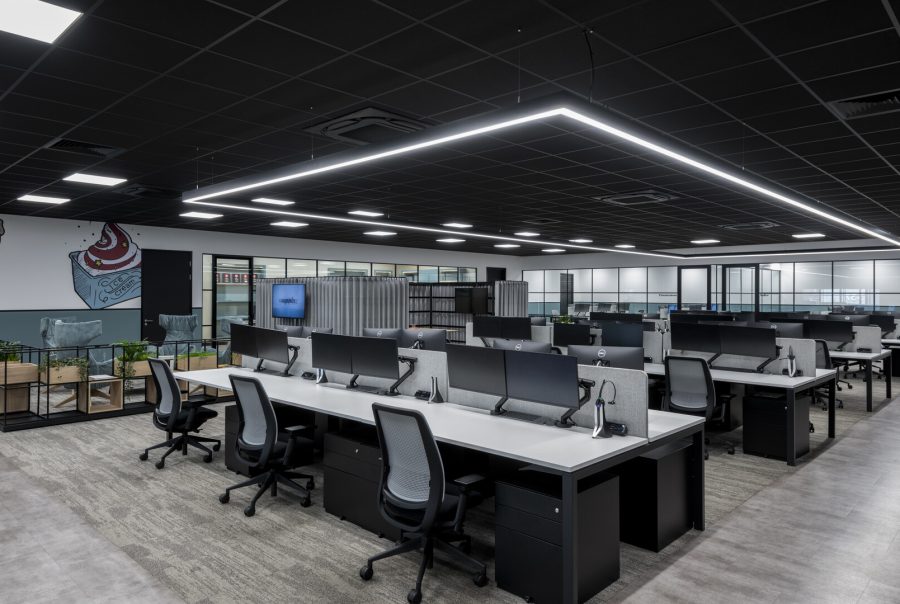Supporting Neuro-diverse Colleagues
In today’s rapidly evolving workplace, fostering diversity and inclusion is a top priority for many organizations. It is crucial to ensure that neurodiverse colleagues, including individuals with conditions such as autism, ADHD, and dyslexia, feel supported and valued. An often overlooked aspect of this inclusivity is office design. Creating a neurodiverse-friendly workspace can make a significant difference in the well-being and productivity of these employees.
Understanding Neurodiversity
Before delving into how office design can support neurodiverse colleagues, let’s first grasp the concept of neurodiversity. Neurodiversity recognizes that neurological differences are a natural part of human diversity. It includes conditions like Autism Spectrum Disorder (ASD), Attention Deficit Hyperactivity Disorder (ADHD), and dyslexia, among others. These differences can bring unique skills and perspectives to the workplace but may also present challenges.


Statistics on Neurodiversity
To better appreciate the significance of designing inclusive workspaces, it’s essential to understand the statistics surrounding neurodiversity. According to the World Health Organization (WHO), one in 160 children globally has ASD, and approximately 5% of children worldwide have ADHD. The 2018 CIPD Neurodiversity at work guide states “it is now widely accepted that neurominorities represent in total a large percentage of the overall population, likely greater than 10%. For organisations, this means that more than one in ten job applicants, existing staff and customers are likely neurodivergent in some way.”
Creating a Neuro-diverse Supportive Office
Sensory Considerations
One of the primary concerns for neurodiverse individuals is sensory sensitivities. Bright lights, loud noises, and strong odors can be overwhelming. Adapting office lighting to reduce glare and flicker, and quiet zones or sensory rooms can provide a refuge for those who need a break. According to Dr. Emma Taylor, a specialist in autism, “Sensory-friendly spaces can significantly reduce stress levels for neurodiverse individuals, helping them perform better at work.”
Product Spotlight: Many companies offer anti-glare and sensory friendly lighting, such as darklightdesign.com can be easily installed in office spaces. Quiet booths designed by companies such as Framery provide spaces to retreat from sensory overload.


Flexible Workstations
Neurodiverse colleagues may have varying preferences for their workspace. Businesses should consider providing adjustable desks, ergonomic chairs, and partition dividers cater to individual needs. This flexibility can help employees with ADHD stay focused. Individuals with sensory sensitivities can also control their environment.
According to Sarah Johnson, an interior designer with expertise in inclusive office spaces, “Giving employees the freedom to adapt their workspace to suit their needs can significantly enhance their comfort and productivity.”
Product Spotlight: Height-adjustable desks such as the Tia by Moventi, allow employees to switch between sitting and standing.
Clear Wayfinding and Visual Supports
Individuals with neurodiverse conditions like dyslexia may benefit from clear signage and visual supports. Using icons, color-coded systems, and simple wayfinding can make navigation around the office more straightforward.
Dr. Jane Smith, a specialist in neurodiversity and education, emphasizes, “Clear visual cues and a well-organized environment can reduce anxiety and confusion for neurodiverse individuals.”
Product Spotlight: Companies like Visual Magnetics offer customizable magnetic wall systems to create visual supports and interactive workspaces.


Quiet Spaces and Noise Control
ADHD and autism can make it challenging to concentrate in a noisy, open office environment. Designating quiet areas or implementing noise-cancelling technologies can be invaluable for neurodiverse employees.
According to Alex Turner, a workplace strategist, “Creating designated quiet spaces is a simple yet effective solution to accommodate employees with sensory sensitivities or concentration challenges.”
Product Spotlight: Noise-cancelling headphones, such as the Bose QuietComfort, can provide a personal escape from distracting sounds.
Designing an inclusive workspace that supports neurodiverse colleagues is a crucial step toward creating a more diverse and welcoming workplace. By considering sensory needs, offering flexible workstations, providing clear visual supports, and offering quiet spaces, organizations can empower all employees to thrive. As the statistics on neurodiversity continue to grow, investing in inclusive office design is not just a gesture of goodwill but a strategic move toward fostering a more innovative and inclusive work environment. To learn more about neurodiversity in the workplace, visit Neurodiversity Week for a wealth of resources and the 2018 CIPD. The Neurodiversity at Work Guide.
Who We Are
We are a team of highly skilled individuals who are passionate about designing and building better working environments in offices, schools and warehouses. We are based in Sussex and work throughout London and the South.
We have a team of designers, estimators and project managers who have the capability with the help of tried and tested sub contractors to run your fit-out or refurbishment project no matter the scale. In an industry of vast faceless corporations we can offer you a personal bespoke service from the initial design stages through building works to completion. We strive to give our customers a design led, stress free, reliable and cost effective service, that’s why a large percentage of our business is made up of happy returning clients.







